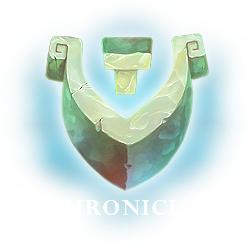Despite differences between people hailing from various towns and countries of the Ancient Lands, they all have one thing in common – a coinage. The origins of the law which introduced common coins can be traced back to the times when Humans were the dominant race in the world. The coinage was established by The Great Merchant Council – the key power in Morten through which led important trade routes and mercantile guilds from Boria, Engaroth, and Istania. The new law at first did not influence Vartevians, but later, after traders began to experience heavy financial losses, they decided to follow the others. Undorh was the last country in which the new currency was introduced. It was because the locals always preferred barter trade and payments with grain or livestock over exchanging metal discs with each other. In the northern part of Undorh, people would also trade for hides, honey, and salt.
Today, many regions of the world share a common currency and many larger towns have their own custom patterns that are used to this day. Sometimes also smaller cities produce a one-time batch of coins for a specific occasion. However, due to identification and forgery problems, such coins are produced less often today. Many towns try to fight with forgers in any way possible, scaring them off with equally fanciful and cruel punishments. Yet, boiling in oil and burning at stakes don’t seem to make a significant difference thus far.
The names of coins vary depending on the country, but even so, it is relatively easy to identify their price. The most valued coin on the market is a golden Dragon Ducat, sometimes also called simply a ‘golden ducat’ or a ‘dragon coin’. Despite the region in which they are made, these coins always bear the sign of the dragon. The Golden Ducats are also the first targets of forgers. For that reason, traders tend to weigh them and make cuts to make sure whether the coin is made of gold. Forgers tend to utilise different methods of faking them, for instance by adding lead to the alloy from which the coin is made. Sometimes to make it look more convincing, the gilding of such a coin is carefully polished and even bears markings of supposed cuts.
The coin of a lower value is a Silver Patron, whose name is derived from the image of a patron assigned to the given land. The patron can be a mer, king, or a god depending on the country. Sometimes people disagree on whose face or symbol should feature on the coin, and this is reflected in the face of such a figure being blurred or destroyed. The Silver Patron is also called a ‘Silver’ or ‘Patronlet’. The most common way of forging them is by adding copper to the alloy. Just like in the example of Golden Ducats, people also tend to plaster such coins by moulding them entirely from copper or tin and covering them with a thin layer of silver.
The most commonly seen coin on the market is a copper Red Dwarf, often associated with the poor. You cannot pay them for renting a room in the filthiest neighbourhood, but for a handful of them, you can buy a low-grade meal and beverage. It is also the most ‘honest’ coin, as people barely check its uniqueness. To consider yourself rich by collecting Red Dwarfs, you also have to be strong enough to carry a whole bag of them.
1 Dragon Ducat = 10 Silver Patrons = 100 Red Dwarfs
